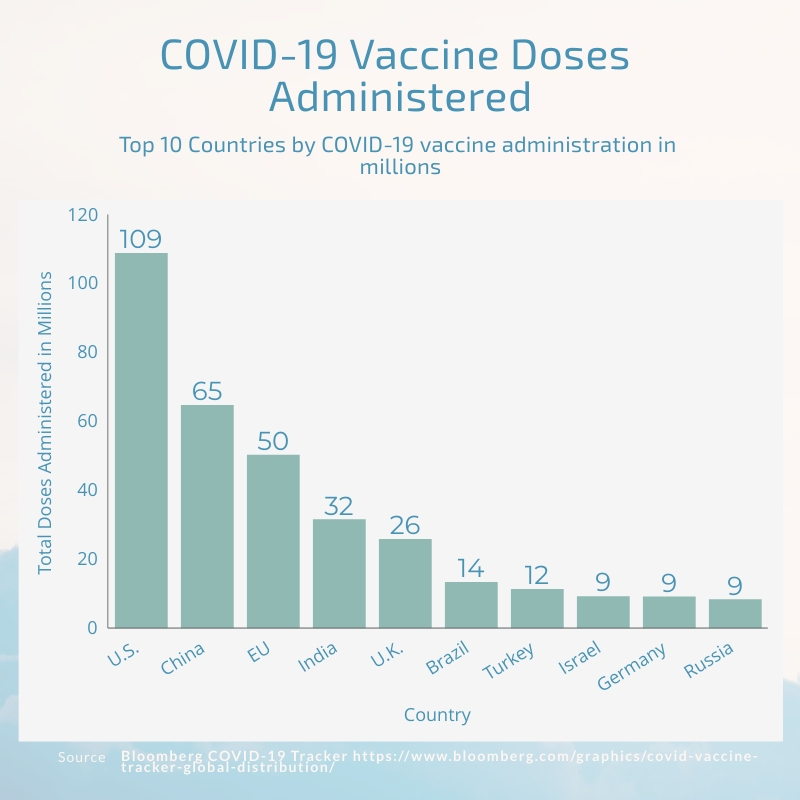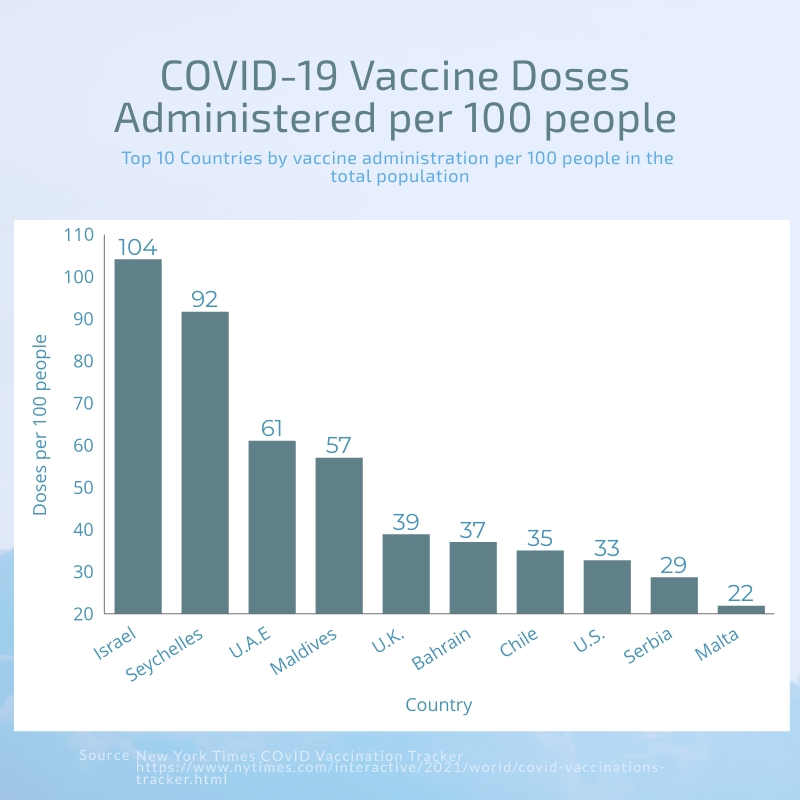COVID-19
Ontario now in third wave of COVID-19 says Ontario Hospital Association

By: Daniel Johnson
The Ontario Hospital Association said on Twitter that the province is now experiencing a third wave of COVID-19 infections, citing increases in variants and patients in intensive care.
The determination was made using data from Ontario’s COVID-19 Science Advisory Table, which shows that as of Monday an estimated 49 per cent of new cases were variants. The Ontario Hospital Association also said that ICU numbers were approaching 350.
“Strong adherence to public health measures is urgently needed to prevent overwhelming hospitals,” said the Ontario Hospital Association in the Twitter post.

As of March 13, the R(t) value, measuring the speed of transmission, was 1.35 for new variants and 0.90 for the initial virus.
A recent study published by a journal named Nature indicated that the new COVID-19 variant, specifically the B.1.1.7 or U.K. variant, was on average 55 per cent more lethal than the original virus. This study indicated that the variant translates into an increased mortality risk for a 55 to 69-year-old male from 0.6 per cent to 0.9 per cent.
The Ontario government recently launched a provincial booking portal and customer service desk for COVID-19 vaccines. The portal went live on Monday and now accepts appointment bookings for people born in 1941 or earlier to get vaccinated at a mass immunization clinic.
The province has administered over 1.1 million vaccine doses, including over 127,000 doses to long-term care residents. Currently, over 285,000 Ontario residents are fully vaccinated.
Dr. Eileen de Villa, Toronto’s medical officer of health, said at a press conference that a decision will be made this week as to how the city will fit into Ontario’s COVID-19 framework.
“We should all be concerned by what we’re seeing, both here in Toronto and when we look around the world,” said de Villa.
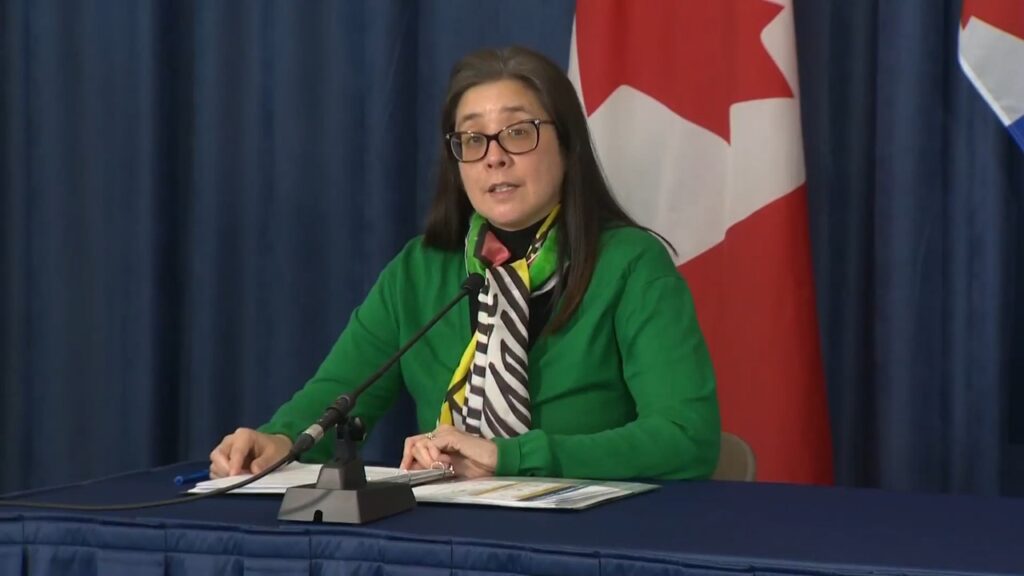
The medical officer said she is specifically concerned with an increase in the city’s seven-day moving average, which increased from 354 to 420 from March 9 to March 15. Additionally, de Villa said that COVID-19 variants have triggered a third wave in parts of Europe.
Anonymous cell phone data, said de Villa, also shows that Toronto residents are spending less time at home and travelling to areas with fewer restrictions.
“The pandemic is not over,” said de Villa. “We are nearing the finish line, but we are not there yet.”
COVID-19
Soundscapes Records Closing Permanently
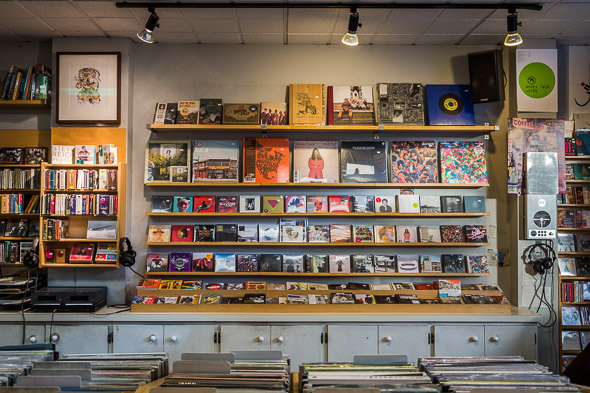
By: Elena De Luigi
StoryMap by: Kemone Moodley
Read Time: 2 mins.
After more than 20 years in the music business, Toronto’s favourite Soundscapes Records is closing its doors this spring.
The local shop thanked their customers for their support in a thank-you note on their website.

“The last 20 years have seen a golden age in access to the world’s recorded music history both in physical media and online. We were happy to be a part of sharing our knowledge of some of that great music with you.”
In an interview, Soundscapes employee Phil Liberbaum told NOW Magazine that the record shop’s demise is directly related to the COVID-19 pandemic. With the province continually changing its restrictions, concert-ticket sales and limitations on gatherings plummeted, and the store could no longer keep up with the costs.
“We had a significant number of loyal customers who came in during the reopening in June after the first lockdown, but it wasn’t enough,” he said.
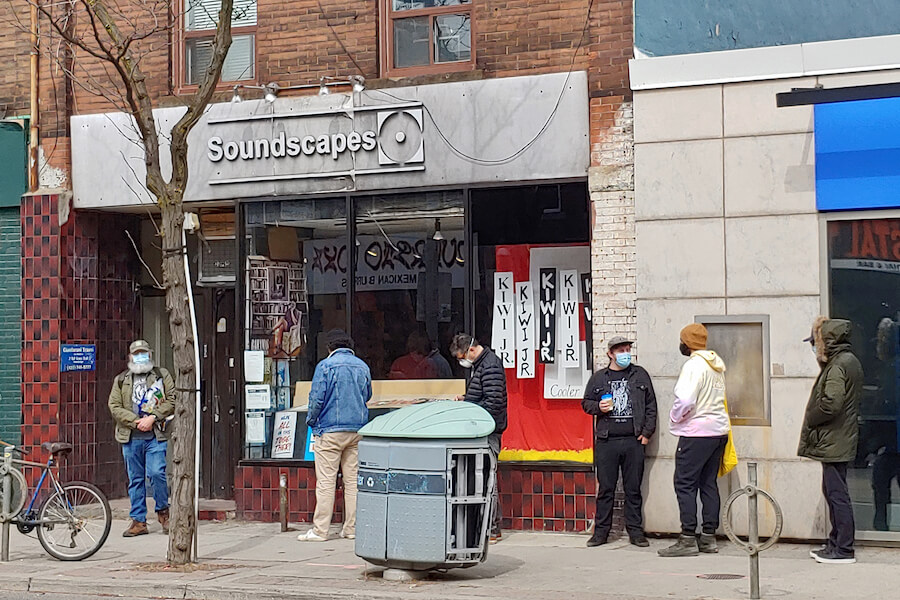
Other local favourites in the city that have closed their doors include Gandhi Indian Cuisine, Dave’s, Crocodile Rock Bar, Universal Grill, Pappas Grill, The Boat, Moo Frites, Vesuvio Pizzeria and Spaghetti House, Underground Garage, The Hideout, The Beaver, Scallywags, Lucky Star and Café Crepe.
According to the Canadian Federation of Independent Business (CFIB), 58,000 businesses across Canada have closed their doors permanently, citing financial strain from COVID-19 closures and restrictions.
The federation’s small business dashboard shows that as of March 9 this year, 62 per cent of Canadian small businesses are open while only 31 per cent are hitting or exceeding routine sales numbers. In Ontario, only 55 per cent are open, with 27 per cent seeing normal or higher revenue goals being met.
These statistics mean that the national average of debt per business was $170,000, with the agriculture and natural resources sector reaching an average of $329,000. Additionally, the total amount of debt of small businesses in Canada is $135 billion, while the industry with the most businesses in debt was hospitality, scoring 91 per cent.
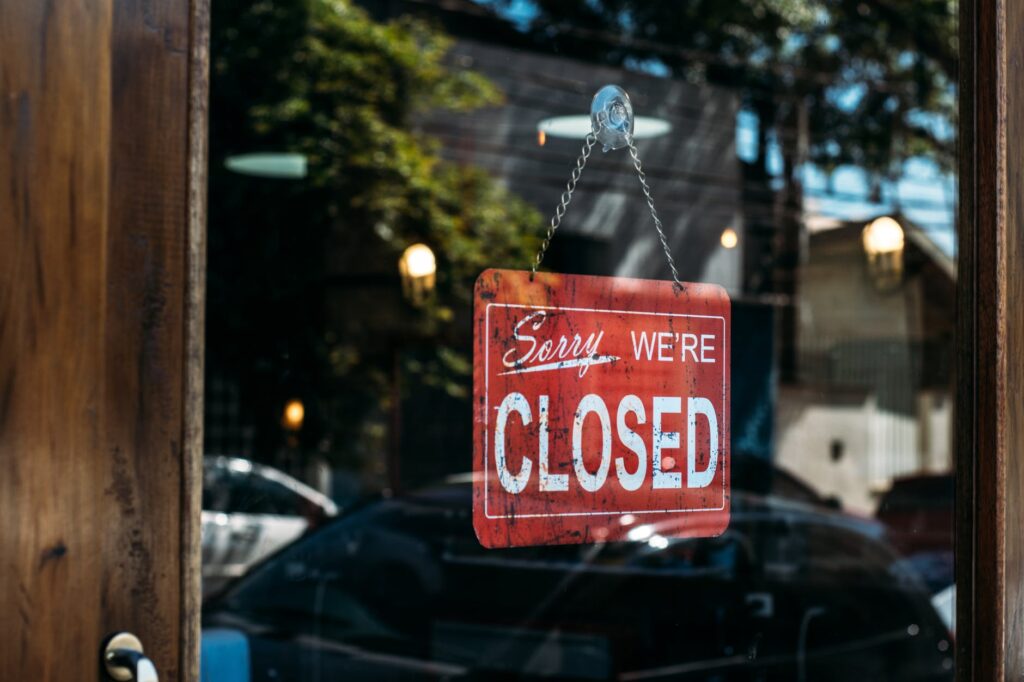
The CFIB also found that one in six businesses in Canada is at risk of closing, meaning 71,000 to 222,000 are in jeopardy with 2.4 million jobs at stake.
In turn, the federation reported 73 per cent of independent businesses took on debt due to COVID-19, while 76 per cent are expected to take longer than one year to pay off those debts.
COVID-19
Global COVID-19 Vaccination Leaders and Laggers

By Stephanie Leonardelli
India achieved its highest number of vaccinations on a single day, administering over three million COVID-19 vaccines this Monday. In what is regarded as one of the world’s largest inoculation drives, India has jabbed more than 30 million people with at least one dose of a coronavirus vaccine to date. Accounting for as much as 62 per cent of global vaccine production, India is deemed a global pharmaceutical powerhouse.
India has quietly pursued “vaccine diplomacy” at a time where international cooperation in sharing vaccines is limited. Its Vaccine Friendship campaign has shipped hundreds of thousands of Indian-made Covishield vaccines, manufactured under license from Oxford-AstraZeneca to some 60 countries, says Channel News Asia. They have also offered 1.1 billion vaccine doses to the World Health Organization’s (WHO) COVAX program to distribute COVID-19 vaccines to poorer countries.
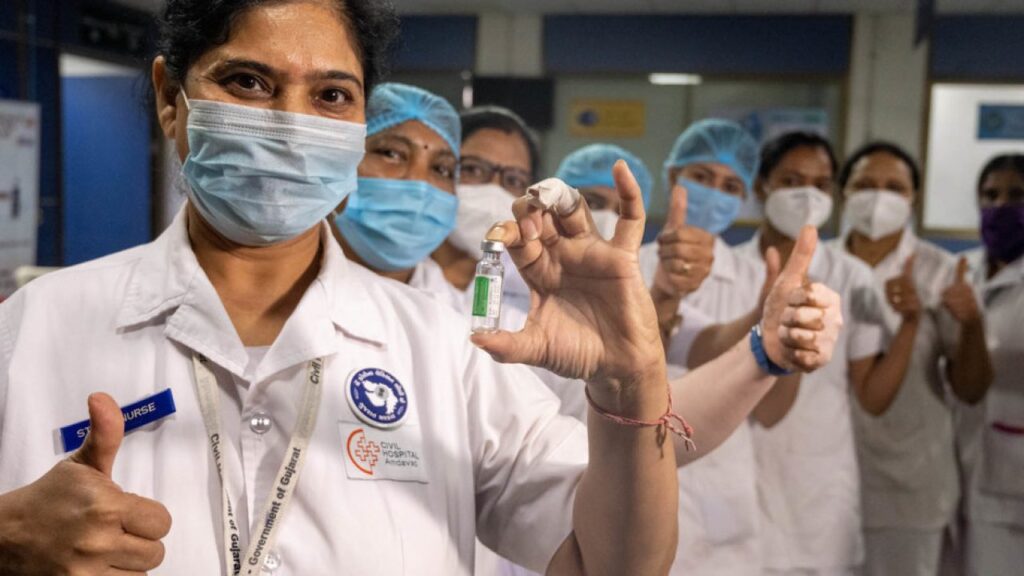
As remarkable as these statistics are, India is not the leader in doses administered worldwide relatively speaking. The Our World in Data project driven by Oxford University updates their data each morning with the official numbers of global vaccinations by country per 100 people. Today, the data revealed that only two per cent of the entire population of India has received at least one dose of a COVID-19 vaccination.
Israel on the other hand, has impressively jabbed 59 per cent of its population with at least one dose of a vaccine. Having inoculated its population faster than any other country, 48 per cent of its total population is fully vaccinated. The Seychelles, U.A.E., Maldives, and the U.K. trail behind as leaders in vaccination doses administered.
Despite this impressive headway, countries like Egypt, Uganda, and Iran have vaccinated less than one per cent of their populations.
This stark gap between vaccination programs in different countries reveals the locations left behind in the sprint to receive a vaccine. “It’s a race to get vaccinated and we just tripped,” said James Watmough, a University of New Brunswick mathematician.
As of February 14, there were still 130 countries that had not yet started vaccinating residents, according to NPR.
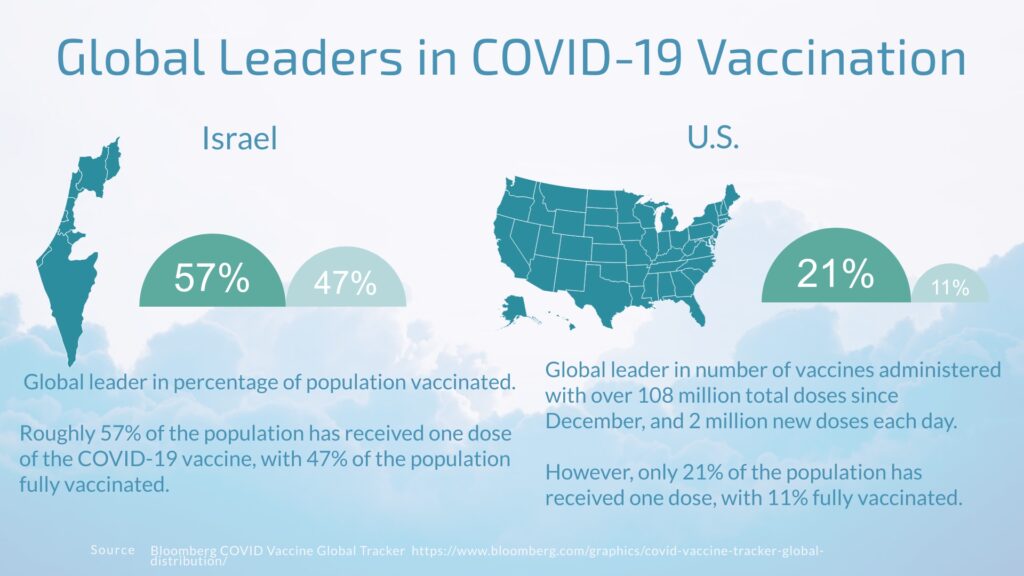
With over 381 million vaccine doses administered to date worldwide, the doses remain relatively scarce globally. According to the New York Times, less wealthy countries are relying on the COVAX vaccine-sharing arrangement, which aims to provide two billion doses by the end of 2021.
As newly approved vaccines and potential treatments for coronavirus surface around the globe, there are “a handful of countries that have set specific vaccination targets, but for the rest of the world the picture is less clear,” writes BBC.
-

 Canada5 years ago
Canada5 years agoSkyrocketing real estate prices spill over to suburban areas and small cities
-
Uncategorized5 years ago
Hello world!
-

 COVID-195 years ago
COVID-195 years agoSoundscapes Records Closing Permanently
-

 Entertainment5 years ago
Entertainment5 years agoLil Nas X breaks the internet with new music video
-

 Entertainment5 years ago
Entertainment5 years agoWarner Bros. ‘Godzilla vs. Kong’ renews confidence in film industry with box office revenue
-

 International5 years ago
International5 years agoCorruption Convictions Annulled Against Brazil’s Ex-President
-

 Entertainment5 years ago
Entertainment5 years agoEllen DeGeneres loses over 1 million viewers following an apology over toxic workplace allegations
-

 International5 years ago
International5 years agoThe fallout from Harry and Meghan’s bombshell interview with Oprah Winfrey

